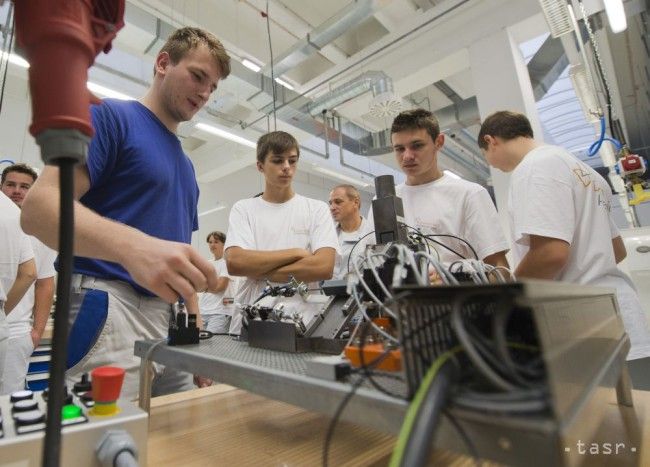Firms Still Lack Students Despite Higher Demand for Dual Education

Bratislava, September 14 (TASR) – The number of employers, schools and students joining the dual education system has doubled in the 2016/17 school year when compared its first year (2015-16), Jaroslav Holecek, President of the Employers’ Board for the Dual Education System, told a news conference on Wednesday.
A total of 1,121 teaching contracts have been signed, and 1,543 students have joined the system. Schools claim that students’ results have improved in general, but employers still complain about an insufficient supply of trained students.
The dual education system is entering its second school year with a total of 142 employers creating 172 practical training schemes. The number of schools linked to the system has grown as well. Fifty-seven schools now form part of the system, while the number of study and training fields reaches 48.
Holecek views the above figures as positive news. He pointed to the fact that employers have created 2,700 places for students, although only just over 1,500 of them have been filled. In fact, the employers concerned are prepared to take on 6,145 school-leavers. “Employers see this as an opportunity to prepare qualified labour for themselves. We’ve been successful in getting foreign investors involved. They see this as natural,” stressed Holecek.
Meanwhile, Holecek noted that school attendance has improved thanks to dual education. “Student discipline at schools has improved, and students want better grades. Their monthly remuneration depends on their grades, discipline and attendance. So the motivation has worked in this case,” he said.
However, Holecek also mentioned some weak points of the system. Employers still can’t find as many students as they need. Pupils and their parents still don’t show any great interest in preparing for a job. Holecek sees the problem in a lack of information and the absence of an information-educational campaign. Another problem lies in the unsuitable structure of study and training fields and the form of the school network.



